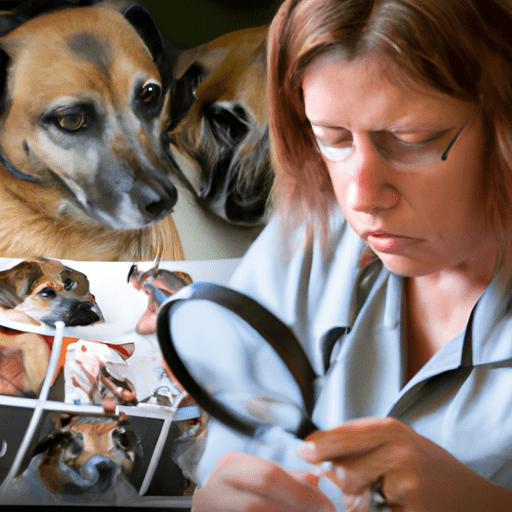Understanding Your Dog’s Cycle
Your furry friend is an integral part of your life. And as a responsible caregiver, you’d naturally want to understand every nuance of their health and behavior, including their reproductive cycle. Dogs, like humans, have a cycle, but it’s quite different from ours. Knowing when your dog ovulates is crucial, especially if you’re planning to breed.
Female dogs typically have their first heat cycle between six months to one year of age, although it can vary with breed and size. Unlike women who go through a monthly cycle, dogs usually experience estrus, or heat, twice a year.
The dog’s cycle consists of four stages:
- Proestrus
- Estrus
- Diestrus
- Anestrus
Each stage has distinct behaviors and physical changes that you’ll notice. Let’s delve into them in more detail.
The Stages of the Canine Estrus Cycle
Proestrus
Your dog’s cycle kicks off with the proestrus stage, lasting approximately 9 days but can range from 3 to 17 days. During this stage:
- Your dog will attract males but won’t be receptive to mating.
- You’ll notice swelling in the vulva and some bloody discharge.
Estrus
This stage is when ovulation occurs. It lasts for 9 days on average but can range between 3 to 21 days.
- Your dog is now receptive to males and mating.
- The discharge changes from bloody to a lighter, straw-like color.
Diestrus
The diestrus stage lasts approximately 2 months. Whether or not your dog is pregnant, she’ll act as if she is during this phase.
Anestrus
This is the resting stage, varying between 2 to 3 months. Your dog’s body is preparing for the next cycle.
How to Detect Ovulation in Dogs
Detecting ovulation in dogs is not as straightforward as observing behavioral changes. Here are some methods that can help:
-
Vaginal Smears: This involves collecting cells from the vagina and observing them under a microscope.
-
Hormone Testing: This is the most accurate way to detect ovulation. Your vet can test for levels of progesterone, a hormone that spikes during ovulation.
Remember, each dog is unique, so the timing and signs of ovulation can vary.
Why Knowing Your Dog’s Ovulation Cycle Matters
As a caregiver, understanding your dog’s ovulation cycle can help in several ways:
-
Breeding: If you’re planning to breed your dog, knowing the ovulation cycle can improve the chances of successful mating.
-
Health Monitoring: Regular cycles indicate good health. Irregularities may suggest health issues.
-
Preventing Unwanted Pregnancies: If you’re not planning to breed, knowing the cycle can help prevent unwanted pregnancies.
Frequently Asked Questions
Q: How often do dogs go into heat?
A: On average, dogs go into heat twice a year, but it can vary depending on the breed and individual dog.
Q: Can I use human pregnancy tests on my dog?
A: No, human pregnancy tests do not work on dogs.
Q: How long does a dog’s heat cycle last?
A: A dog’s heat cycle lasts approximately 2 months, broken into several stages.
Q: Can I prevent my dog from going into heat?
A: Yes, spaying your dog will prevent heat cycles.
Q: When should I take my dog to the vet for breeding?
A: It’s recommended to visit the vet before your dog’s heat cycle begins if you’re planning to breed.
Understanding your dog’s ovulation cycle is just another way of ensuring their health and happiness. As a dedicated caregiver, your attentiveness and care can make a world of difference in your furry friend’s life.



